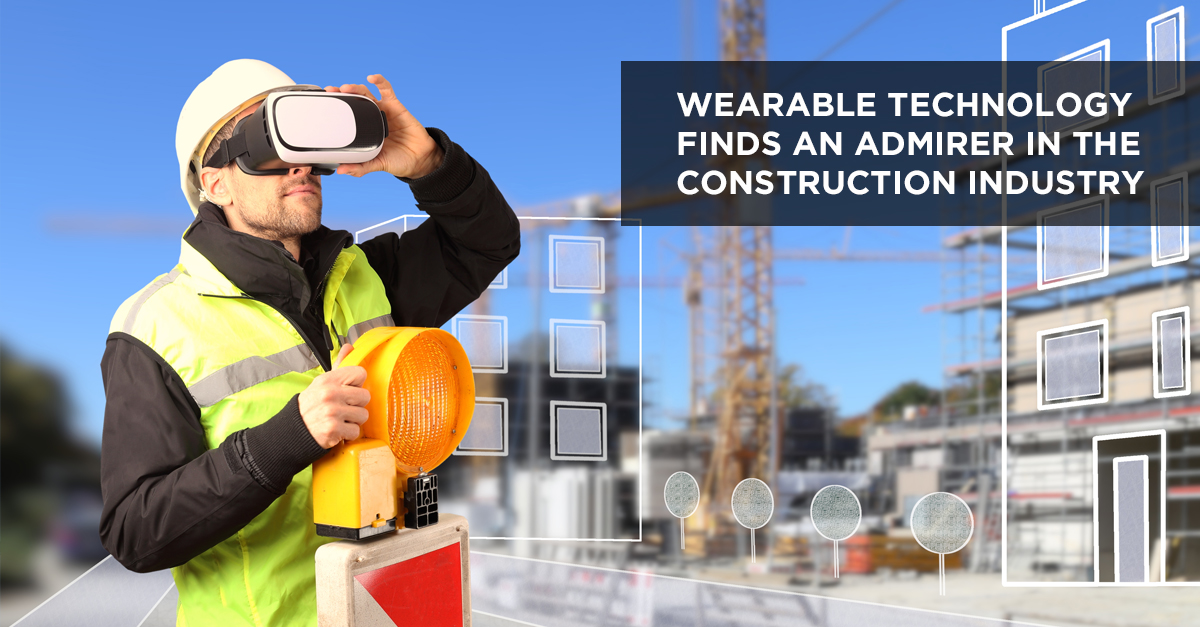Wearable technology finds an admirer in the construction industry
Wearables are all the hype today, all over the world and across industries. The growth of the Internet of Things and connected devices has fueled a digital revolution and wearable technology is the next big thing, waiting in the wings to make a transformative impact. The wearables wave has led to some disruptive innovations in recent years, promising the potential to transform human lives, businesses and even the global economy.
In fact, unlike many other sectors, the wearables market witnessed extremely positive results, in the COVID-19 affected economy. The Coronavirus outbreak has in fact expanded the role of wearable technologies, due to the enhanced health and safety concerns. According to IDC, the worldwide wearables market is likely to maintain double-digit growth in 2020 and through 2024[1]. A wide array of industries is already leveraging the growing trend towards wearables, and it is slowly but surely becoming more prevalent in the construction sector as well.
Construction Wearables
Wearable technology offers great promise for the construction industry, in enhancing the safety and efficiency of the workforce. It presents the potential to constantly monitor the health of the workers and professionals, to help reduce the chances of work-related injuries and fatalities. It can also help improve jobsite communication and data exchange, in an environment that is often too loud for ordinary communication.
Here’s a look at some of the wearable technologies that could make the built environment smarter, safer and more efficient:
- Tactile wearables: More commonly called Exoskeletons, these are designed to provide muscular and skeletal support and add extra strength to the wearer. They multiply the worker’s capacity and endurance with metal frameworks that are fitted with motorized muscles. Wearing the exosuit augments the worker, allowing more lifting strength with reduced effort and improving the overall productivity. The obvious health and safety benefits have greatly popularized its use in the construction sector. ABI research predicts that the Robotic Exoskeleton market will expand at 39% CAGR and reach $1.9 Billion in 2025[2].
- Smart Glasses & AR: Imagine walking into a construction site and getting a real-time 3D view of the structure by just putting on some goggles. Smart glasses combined with the power of augmented reality (AR) can quite literally transform the way we look at a construction site. Allowing the workers to switch between floor plans, drawings and specifications, smart glasses offer hands-free advantage to the workers to perform faster and smarter.
- Smartwatches: The Covid-19 pandemic has led us to understanding how easily the health of an employee can be at stake. It has prompted industries all over the world to take steps toward improving worker health and safety. Reports say that the smartwatch market jumped 20% during this pandemic[3]. Smartwatches can boost the on-site safety of the workers by allowing real-time heart-rate and temperature monitoring. It can also give timely reminders alongside constantly updating the health and activity chart of the wearer in the database.
- Connected hardhats and high-visibility belts: Allowing for vital sign monitoring despite social distancing, the sensors installed in this personal protective equipment can indicate whenever the worker is tired or overexerted. Thanks to connected devices, the contractors and managers can evaluate the data from these devices to improve the working conditions of their employees.
The kind of money that is put into any construction project is huge. What wearable technology offers are both short-term and long-term benefits at a relatively low investment. However, it is important for a building manager or contractor to identify the functional purpose of each of the desired technologies, in a way that is relevant to their built environment, before adopting them.
Wearables are the future
Wearable technologies have already created a paradigm shift in the way we use technology. The trend has transformed the practices of data collection and governance into a seamless, more real-time exercise, which supports multiple functionalities – from personalized human performance tracking, to integrated industrial monitoring. In essence, the organization gains the same granular insight into the parameters that optimize the productivity of their workforce, as those that impact the performance of their automation and mechanized assets.
Just like smartphones completely transformed our lives, wearable technology will unleash innovations that we can probably not anticipate currently. It is a revolution that is waiting to happen, and a long awaited evolution in the construction industry. Wearables are the final step to fully integrating digital infrastructure with the analog world, in an industry that still retains a strong tactile element to itself. This is a technology that can not only transform individual lives, but can also enhance the industry’s overall productivity, efficiency and safety.




